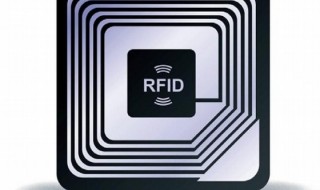Radio frequency identification (RFID) technology is a kind of automatic identification technology, that is, non-contact two-way data communication through wireless radio frequency, and the identification of the target is also applied to the smart home system. A typical RFID system is generally composed of RFID tags, readers and computer systems. Among them, the RFID tag generally stores encoded data of a predetermined format for uniquely identifying the object to which the tag is attached. Compared with the traditional identification method, RFID technology does not require direct contact, optical visualization, and manual intervention to complete information input and processing, and the operation is convenient and quick. It can be widely used in production, logistics, transportation, transportation, medical, anti-counterfeiting, tracking Application areas such as equipment, equipment and asset management that collect and process data are considered to be future replacements for bar code labels. The history of RFID development RFID was first used in World War II to identify enemy and me in air operations: At that time, Britain used to confirm whether it was its own aircraft to enter the airport to avoid accidental attacks. But in the more than 50 years since then, its development has been stagnant. In recent years, its application technology environment has become more mature and has emerged, attracting the attention of many companies. The following table describes the history of RFID technology development. In the 20th century, the theory and application research of radio technology was one of the most important achievements in the development of science and technology. The development of RFID technology can be divided into 10 years as follows. 1941-1950: Radar improvements and applications spawned RFID technology, and in 1948 established the theoretical basis of RFID technology. From 1951 to 1960: The early stage of RFID technology exploration was mainly laboratory experiments. 1961 - 1970: The theory of RFID technology has been developed and some application attempts have begun. 1971-1980: RFID technology and product R&D are in a period of great development, various RFID technology tests have been accelerated, and some earliest RFID applications have emerged. 1981-1990: RFID technology and products enter the commercial application stage, and applications of various scales begin to appear. From 1991 to 2000, the standardization of RFID technology became more and more important. RFID products were widely adopted by sword factories, and RFID products gradually became part of people's lives. From 2001 to now: Standardization issues have become more and more important. RFID products have become more diverse. Active electronic tags, passive electronic tags, and semi-passive electronic tags have all been developed. The cost of electronic tags has continued to decrease, and the scale of the industry has expanded. For more information on smart home control system prices and smart security alarms, click here! PTC Thermistor for Overcurrent Protection for Telecom PTC Thermistor ,Thermistor,Thermistor for Overcurrent Protection ,PTC Thermistor YZPST YANGZHOU POSITIONING TECH CO., LTD. , https://www.cnfudatech.com